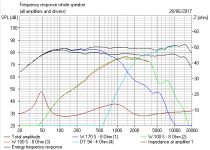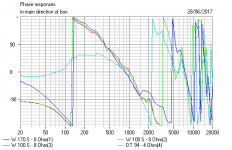Of course two drivers are 6 dB louder than one driver at the same distortion level. System7 and vacuphile are fully correct. ICG falls into the trap of thinking in terms of power, which is very misleading in a system where linear superposition of sound pressure applies. For example, if you wire a second driver in parallel, the first driver still radiates the same SPL and the same distortion as before, but the radiated power "magically" doubles due to the presence of the second driver. This is where the claimed correlation of power and distortion fails.
Of course two drivers are 6 dB louder than one driver at the same distortion level. System7 and vacuphile are fully correct. ICG falls into the trap of thinking in terms of power, which is very misleading in a system where linear superposition of sound pressure applies.
I am not falling into a trap. Same power = same distortion. Add same sources, you gain +3dB of each, that applies to the spl aswell as to the distortion. It's as simple as that.
For example, if you wire a second driver in parallel, the first driver still radiates the same SPL and the same distortion as before, but the radiated power "magically" doubles due to the presence of the second driver. This is where the claimed correlation of power and distortion fails.
Yes, ofcourse it adds to the double (+3dB). But so does the distortion because both drivers 'provide' distortion! Please tell me, where do you put the distortion of the second one to? How do you remove it? You don't? Well, I guess then the driver is still radiating it. And yes, the distortion adds the same as other sound sources, there you have the rise in distortion, +3dB. There ain't no such thing as free lunch in acoustics. (yes, I'm aware of the double negative, but that's the quote)
Now tell me the 2nd driver isn't radiating distortion!
Since you're new at this, I highly recommend bringing the driver wiring directly out to the back of the cabinet with Banana Jack binding posts, so you can easily experiment with the crossover circuitry until you get it right, and even have the option of bi or tri amping the system later on. Active crossovers ahead of the poweramps seems like too much hassle, but it's very good and very predictable. Passive crossovers can be very difficult to get right, since driver impedances change over frequency and many parts in the crossover are interactive. You change a series resistor to get the level right, and now the coil and/or cap is thrown off, etc.
What's the difference between a single driver and two same drivers matched ?
🙄
😛
Well, I have had many different MTM or WTW speakers, and I can say dual driver has very distinctive dual driver sound signature, even they are perfectly time and phase aligned. They do not sound like coax nor single driver. You will probably not hear it until actually getting an MTM speakers and turn on and off one speaker, level matched, of course.
MTM is a very different sound from MT. I like it. There are complexities lurking in the mathematics. The idea of multiple drivers is they efficiently project in the horizontal plane and loudness falls off as inverse distance rather than inverse square. Which is why PA people use them in the concert hall. The classic PA bass speaker is a vertical 4X 12" cab. 12dB gain in level (er, 16X in power, I think, and I could be wrong on that...) for the same percentage distortion level.Well, I have had many different MTM or WTW speakers, and I can say dual driver has very distinctive dual driver sound signature, even they are perfectly time and phase aligned. They do not sound like coax nor single driver. You will probably not hear it until actually getting an MTM speakers and turn on and off one speaker, level matched, of course.
With the ultimate line array of many drivers, each individual driver is working at a much lower power level than a single driver, which is good. Because troublesome distortion is non-linear, it all gets worse at higher excursion and loudness, and high mechanical losses expressed as low Qms seem to be another enemy, because mechanical losses are highly non-linear.
Here are some classic multiple driver speakers. They all have something going for them, IMO. Of course they are all expensive constructions and rely on some deep geometry. But, hey, we love speakers! 😀
BTW, the red Tekton Pendragon is mathematically unsound, IMO. Unless you use the 1:2:1 Philips binomial ratio on tweeter loudness.
Attachments
-
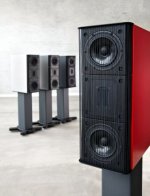 Gryphon_Mojo_Duelund_Loudspeaker.JPG33.9 KB · Views: 237
Gryphon_Mojo_Duelund_Loudspeaker.JPG33.9 KB · Views: 237 -
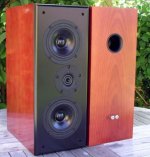 Vifa PL14WJ D'Appolito MTM.JPG28 KB · Views: 778
Vifa PL14WJ D'Appolito MTM.JPG28 KB · Views: 778 -
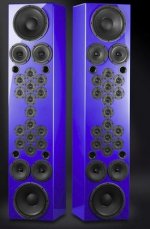 Tektondesign Ulfberht.JPG28.7 KB · Views: 94
Tektondesign Ulfberht.JPG28.7 KB · Views: 94 -
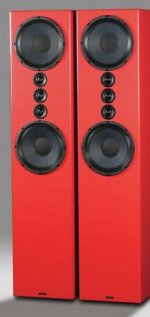 Tektondesign Pendragon.JPG21.8 KB · Views: 236
Tektondesign Pendragon.JPG21.8 KB · Views: 236 -
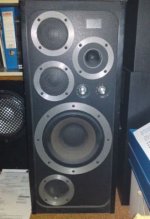 Wharfedale E-70.JPG32.5 KB · Views: 237
Wharfedale E-70.JPG32.5 KB · Views: 237 -
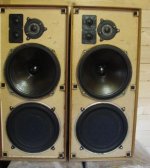 Celestion_Ditton_25.JPG46 KB · Views: 233
Celestion_Ditton_25.JPG46 KB · Views: 233 -
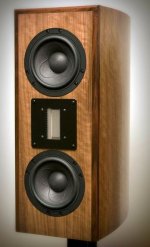 MTM Scanspeak RAAL Ribbon Selah Audio.JPG35.7 KB · Views: 912
MTM Scanspeak RAAL Ribbon Selah Audio.JPG35.7 KB · Views: 912 -
 Allison IC20 Speaker.JPG57.5 KB · Views: 80
Allison IC20 Speaker.JPG57.5 KB · Views: 80
Last edited:
this is getting more and more interresting 🙂
actually, I want the speaker as flexible as possible this why the passive crossover will be in parallel (each path can be used/unused alone
thus I can even have a second 2 way crossover to try the MTM part alone (without bass drivers) or use one amp for the MTM and second one for bass (instead of 3)
I'am also considering not only the sensitivity but also max power for each driver, I know 10W for medium will not be the same for bass (which will more power I guess to be balanced)
I am also considering MTM Tang Band and Vifa because the TB are supposed to be full range so I can make it go as far as 4Khz as the vifa has to be cut at more than 4Khz
actually, I want the speaker as flexible as possible this why the passive crossover will be in parallel (each path can be used/unused alone
thus I can even have a second 2 way crossover to try the MTM part alone (without bass drivers) or use one amp for the MTM and second one for bass (instead of 3)
I'am also considering not only the sensitivity but also max power for each driver, I know 10W for medium will not be the same for bass (which will more power I guess to be balanced)
I am also considering MTM Tang Band and Vifa because the TB are supposed to be full range so I can make it go as far as 4Khz as the vifa has to be cut at more than 4Khz
Attachments
Distortion in loudspeaker drivers is a function of power.
With identical power fed into two coincident drivers, SPL increases 6dB as compared to a single driver fed with the same current.
Therefore, the increase is 6dB with equal distortion and double the power. Free 3dB.
With identical power fed into two coincident drivers, SPL increases 6dB as compared to a single driver fed with the same current.
Therefore, the increase is 6dB with equal distortion and double the power. Free 3dB.
Mansa, as I mentioned before, you need a low xover frequency to have any chance of making an MTM work. 4kHz is about twice as high as you can realistically use. Look for a better tweeter if yours can not be crossed below 4kHz.
Two drivers (each at 1W) produce twice the amout of distortion of a single driver at 1W.Distortion in loudspeaker drivers is a function of power.
With identical power fed into two coincident drivers, SPL increases 6dB as compared to a single driver fed with the same current.
Therefore, the increase is 6dB with equal distortion and double the power. Free 3dB.
Two drivers (each at 1W) produce twice the amout of distortion of a single driver at 1W.
Actually, they will even produce more: they will create four times (6dB) the amount of distortion within the band in which the drivers act coincidentally.
Fortunately, we always refer to distortion as a percentage or proportion. And since the total SPL also goes up by 6dB, the proportion remains the same. But at 4 times the SPL. This is what we were talking about.
Note: as a matter of fact, distortion performance of two coincident drivers will even be better. The reason is that for higher order distortion products, the drivers will no longer be coincident and so they will only add with 3dB and not 6dB, whereas the fundamental will add with 6dB. Didn't want to complicate matters too much since the rough outline might already be a lot to grasp.
Last edited:
Total SPL at total 1W goes up by 3dB.And since the total SPL also goes up by 6dB, the proportion remains the same.
Mansa, I'm embarrassed to say you are getting some seriously unhelpful advice here.
A 5" MTM with an XT25 is easy enough:
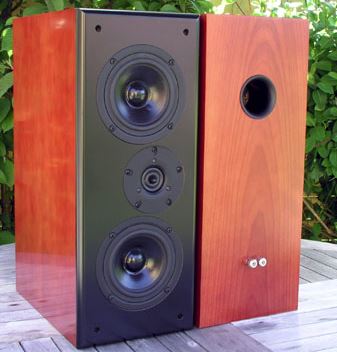
Vifa PL14WJ-
The R2604 is almost identical to an XT25. We've done projects like this with SEAS CA15RLY too. Works well.
A 5" MTM with an XT25 is easy enough:

Vifa PL14WJ-
The R2604 is almost identical to an XT25. We've done projects like this with SEAS CA15RLY too. Works well.
Or, if you want bigger MTM: SBA-16-MTM
Or, if you don't want MTM: 8008-CORNER
This two are one of my favorite Troels's designs.
Both have simple crossover.
Or, if you don't want MTM: 8008-CORNER
This two are one of my favorite Troels's designs.
Both have simple crossover.
Ported enclosures are difficult for a newbie to get right, as are passive crossovers. Buying proven speaker kits is a safer way to go. The question should be, do you want to jump in, make mistakes, learn, and eventually get it right, or do you just want to get some decent speakers without the consumption of significant time (?) It's like driving a go-cart down a road full of potholes. Some will love dodging all the potholes (obstacle coarse), and others will wonder what the heck they were thinking... Personally, I love it. I could research, design and build speaker systems until the cows come home (or the money runs out)...
something like the Nola rega Brio ( see the thread ) or the Sunflowers by P.Carmody.
I guess that Masca is from Europe since Monacors were named.
A double SPH 165 would be monster- If you can avoid the ripple residual at terminusof the TL and tame the rising impedance, windows will be smashed @ 50W 😛
Question is to make a project well defined or go by blocks,i.e. bass section , top
( or bottom : why bass's got to stay on the bottom ???? )
I guess that Masca is from Europe since Monacors were named.
A double SPH 165 would be monster- If you can avoid the ripple residual at terminusof the TL and tame the rising impedance, windows will be smashed @ 50W 😛
Question is to make a project well defined or go by blocks,i.e. bass section , top
( or bottom : why bass's got to stay on the bottom ???? )
Another MTM with a Vifa XT25BG :
https://speakermakersjourney.blogspot.com/2016/03/introducing-lm-1c.html
Should be able to find the XSim files related to it as well.
Best,
E
https://speakermakersjourney.blogspot.com/2016/03/introducing-lm-1c.html
Should be able to find the XSim files related to it as well.
Best,
E
Last edited:
My last post in this thread: all the MTM's you show use WAY too large drivers.
You don't want to space drivers farther apart than 1/4th of the smallest wavelength you want to reproduce, at the penalty of increased lobing (aka beaming).
Do the calculations and you will find that even the smallest drivers you could possibly use in an MTM won't fulfill that criterium. In other words, all MTM's are a compromise already, and by using large drivers, you overstretch.
As to Lightbit's point: you are right in that by doubling the number of coincident drivers, you double the efficiency each time you do that. And since each driver get's only half the current each time you do it, distortion will go down as well.
In other words: there are huge advantages in doubling the number of drivers in terms of efficiency and thus distortion, but the hard to strike right compromise is with vertical dispersion. Make the size of the drivers too large, and you will wind up with only a small horizontal band in which the FR can be made straight. The result: in order to be in the sweet spot, your ears will always need to be at the exact same height.
d'Appolito and JBL have published on this, AES library.
You don't want to space drivers farther apart than 1/4th of the smallest wavelength you want to reproduce, at the penalty of increased lobing (aka beaming).
Do the calculations and you will find that even the smallest drivers you could possibly use in an MTM won't fulfill that criterium. In other words, all MTM's are a compromise already, and by using large drivers, you overstretch.
As to Lightbit's point: you are right in that by doubling the number of coincident drivers, you double the efficiency each time you do that. And since each driver get's only half the current each time you do it, distortion will go down as well.
In other words: there are huge advantages in doubling the number of drivers in terms of efficiency and thus distortion, but the hard to strike right compromise is with vertical dispersion. Make the size of the drivers too large, and you will wind up with only a small horizontal band in which the FR can be made straight. The result: in order to be in the sweet spot, your ears will always need to be at the exact same height.
d'Appolito and JBL have published on this, AES library.
I find the issues with MTM lobing exaggerated, however there are some pretty nice, very low profile (i.e. small diameter) tweets that can help this.
The XT25 and it's variants really are pretty big.
The XT25 and it's variants really are pretty big.
thank you all guys thank you thank you
my sister have the XT25 already from ebay for 50€
so now I will maintain TB for medium
for bass I am between dayton DC160 or Monacor SPH-165
I'll kep you updated as soon as there are news
my sister have the XT25 already from ebay for 50€
so now I will maintain TB for medium
for bass I am between dayton DC160 or Monacor SPH-165
I'll kep you updated as soon as there are news
As Bob Richards says, this could be quite a learning curve for you if you depart from an existing design.
I just ran a similar WMTM up the flagpole. 6 inch bass, two 4 inch mids. And remember that this Duelund curve is what we are after:
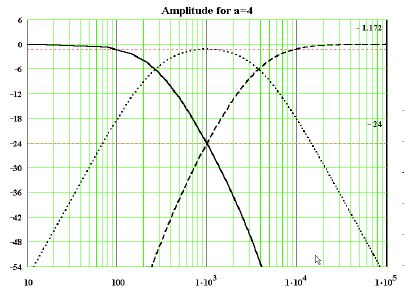
I nicked the MTM R2604 tweeter filter from Troels Vifa PL14WJ-, and we want that 1.5R/10R attenuator with an XT25 to fix the Fs impedance.
Took the bass crossover from the 3 way classic a bit higher. And built the mid filter around the two ends, which only has 4 variables really apart from level adjustment. All seem to work. 700Hz and 3kHz crossover. Loads of SPL in the midrange, as expected. Decent impedance and phase. Loads of slack on mid and tweeter level. All looks doable with your little tangband mids. Have a bash! 😎
Oh, I see I was a bit careless on driver polarity there. You'd conventionally have the bass positive and the other two drivers negative polarity... 😱
I just ran a similar WMTM up the flagpole. 6 inch bass, two 4 inch mids. And remember that this Duelund curve is what we are after:

I nicked the MTM R2604 tweeter filter from Troels Vifa PL14WJ-, and we want that 1.5R/10R attenuator with an XT25 to fix the Fs impedance.
Took the bass crossover from the 3 way classic a bit higher. And built the mid filter around the two ends, which only has 4 variables really apart from level adjustment. All seem to work. 700Hz and 3kHz crossover. Loads of SPL in the midrange, as expected. Decent impedance and phase. Loads of slack on mid and tweeter level. All looks doable with your little tangband mids. Have a bash! 😎
Oh, I see I was a bit careless on driver polarity there. You'd conventionally have the bass positive and the other two drivers negative polarity... 😱
Attachments
Last edited:
- Status
- Not open for further replies.
- Home
- Loudspeakers
- Multi-Way
- New 3 Way project





